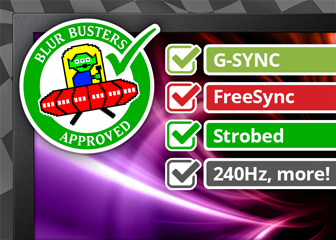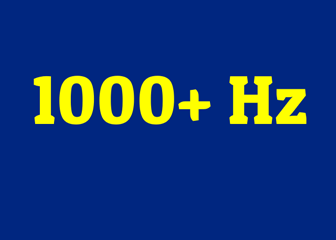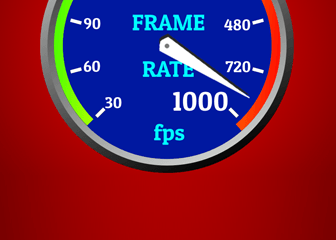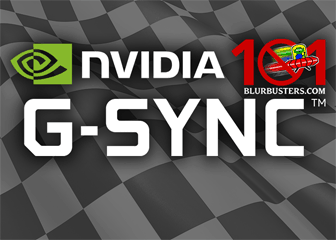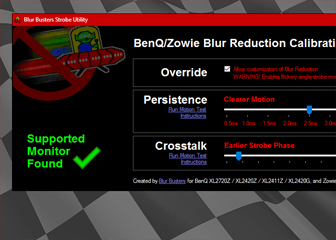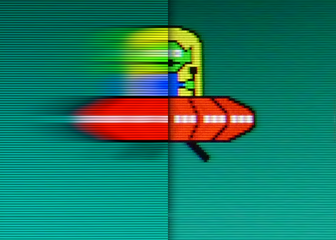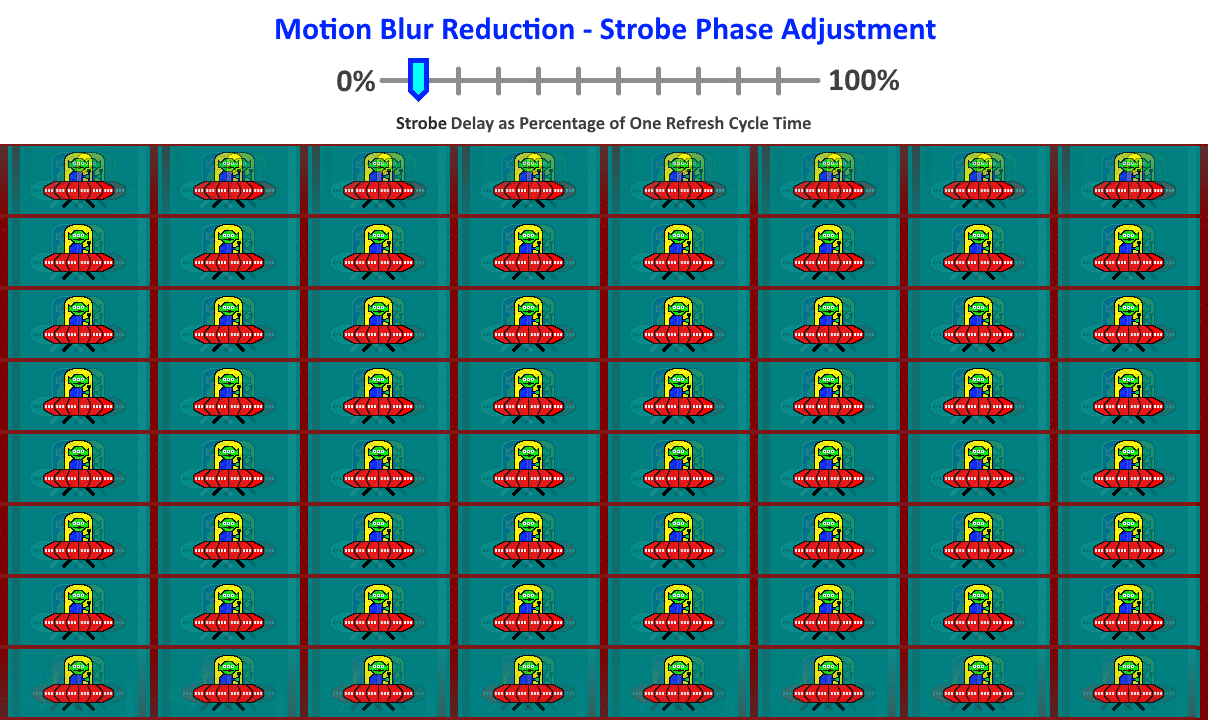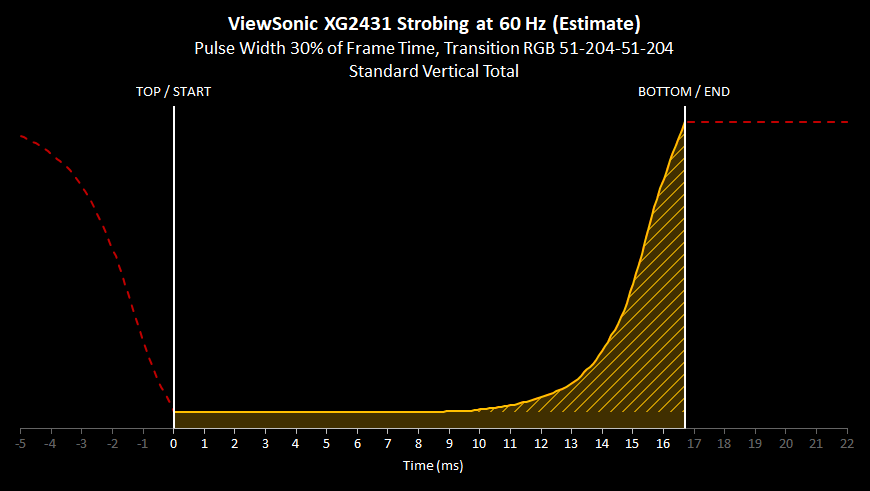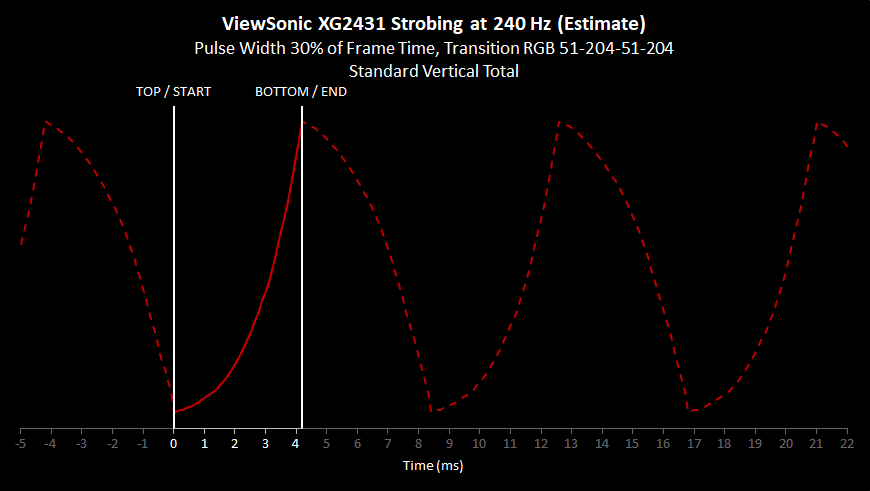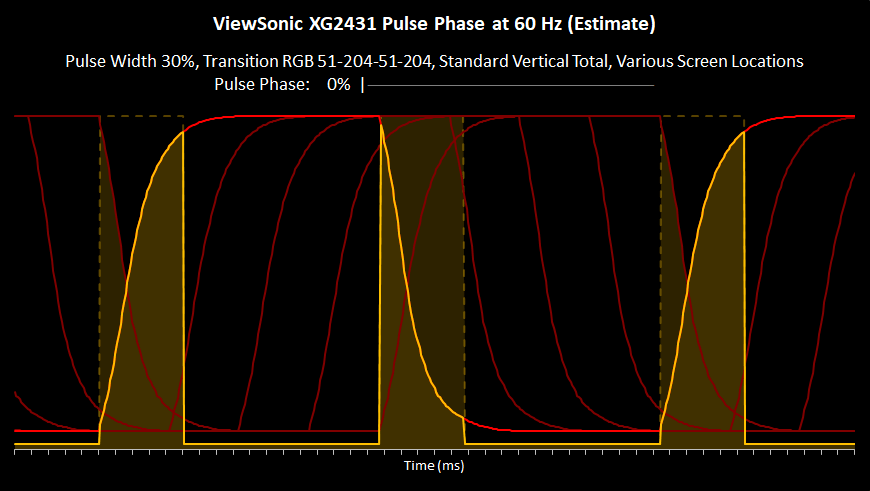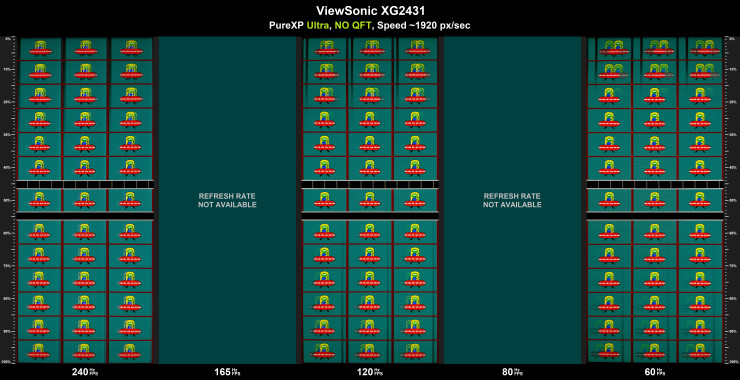On this generation of edge-lit LCDs, strobe crosstalk is caused by:
- Immobile backlight vs mobile scan-out,
- GtG pixel response, and
- other.
As display is scanning-down the image, there are time differences between top and bottom of the screen which in motion translates to tilted/skewed image (for preview run testufo.com/scanskew at 60 Hz). Unlike scan-out, backlight is doing instantaneous global flash. Top and bottom are flashed at the same time, meaning scan-out and backlight are vertically not in sync. Due to these limitations there will be inconsistencies across the vertical dimension of the screen. Some parts will show more image duplication than others. Additionally, if GtG pixel response is slow we get extended or faded strobe crosstalk. Other factors such as slow phosphors (e.i. PFS/KSF, which XG2431 thankfully doesn’t use) will impact crosstalk as well.
With this type of backlight we only get to flash a whole screen. If some of the pixel transitions are on screen during the operation, there will be visible crosstalk (band). We need to work around this limitation by timing the flashing best we can. By simply delaying when the backlight flashes during refresh cycle we can move the crosstalk band up/down and push it off-screen so that screen center can remain clearest. Pulse Phase slider allows us to do exactly that.
Optimal time to turn off the backlight is when the GtG transition is on-screen, or in other words, turn on the backlight when GtG is most off-screen. Due to slow GtG the image in motion might never be fully clean, especially at high refresh rates where GtG zone is much larger proportion of refresh cycle.
On animation above vertical lines mark the top of the screen/start of the scan-out and bottom of the screen/end of the scan-out. Red lines are pixel transitions scanning down the screen. Yellow is backlight flashing on/off and illuminating pixel transitions on screen. Diagonal pattern shows how top-bottom crosstalk occurs.
We can see scan-out is always on the move. The backlight timing is optimal, trying to center the most complete part of continuously rolling GtG transitions. While doing so it captures some of the GtG transitions of current and previous frame.
Notice that phase 100 is equal to 0, meaning it’s a complete wraparound slider.
Crosstalk – Standard Vertical Totals
This is what XG2431 can achieve with standard vertical totals (out-of-the-box). To see improved crosstalk with large vertical totals (QFT), check the Large Vertical Total section.
Note: For the purposes of this test special permission was granted by Blur Busters to Discorz to use the UFO in a non-Blur Busters test program (Smooth Frog). The UFO is a trademark of Blur Busters!
